�
���������������������������������������������� ��������� Rhodes
City of
Rhodes (Greek R�dhos) is located in� southeastern Greece, at the
northeastern extremity of the island of Rhodes, capital
of the Dodecanese, on the Aegean Sea, near Turkey.�� The present city is located near
the site of the ancient city of Rhodes, which was founded in 408 BC
Population (1991) 43,619.�
�
�
�
�
�
�
�
�
�
�
�
�
�
�
�
�
�
�
�
�
�
�
�
�
�
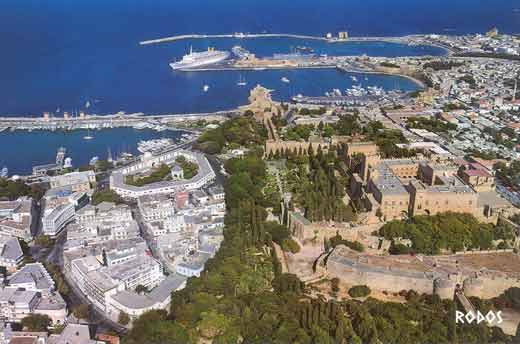
�
�
�
�
�
�
�
�
�
�
�
View of Old Rhodes with modern Rhodes on side and Port in distance. The city is a port and a trading center for agricultural products; manufactures include carpets, brandy, cigarettes, and soap. The modern section, near the smaller northern harbor, contains government buildings, hotels, and a national theater.

Port of Rhodes bordered by two� Pillars (upper Lt) on which� the "Giant Colossus " was to have stood.
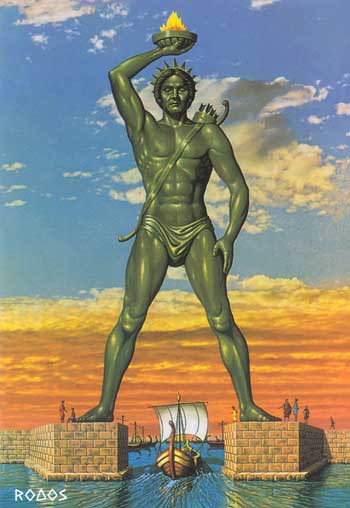
�
The Colossus of Rhodes, depicted in this hand-colored engraving by Martin van Heemskerck, was a� huge bronze statue of the Greek sun god Helios,� erected about 280 BC to guard the entrance to the harbor at Rhodes. The statue stood about 32 m (105 ft) tall and according to legend, it straddled the harbor. An earthquake destroyed it in 224 BC.� The ancient Greeks and Romans considered it to be one of the Seven Wonders of the World. (The Pyramids of Egypt, The Hanging Gardens of Babylon, The Statue of Zeus at Olympia, The Temple of Artemis at Ephesus - see Ephesus section in this site, The Mausoleum of Halicarnassus, The Colossus of Rhodes, The Pharos of Alexandria)
�
�
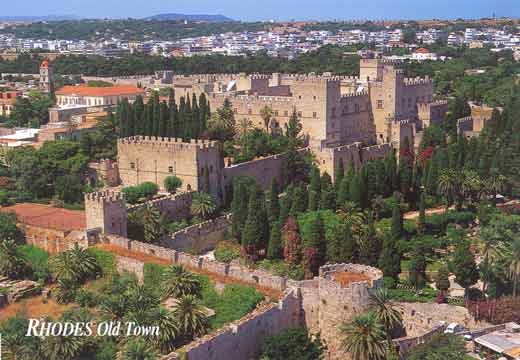
�
�
�
�
�
�
�
�
�
�
�
�

�
�
�
�
�
�
�
�
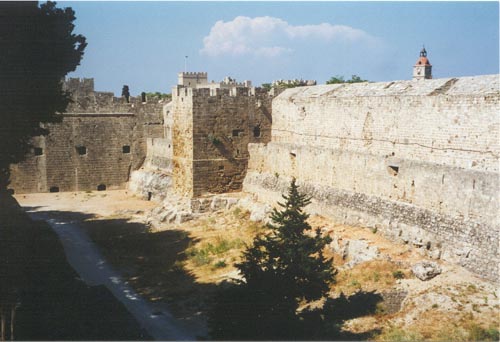
�
�
�
�
�
�
�
�
�
�
�
�
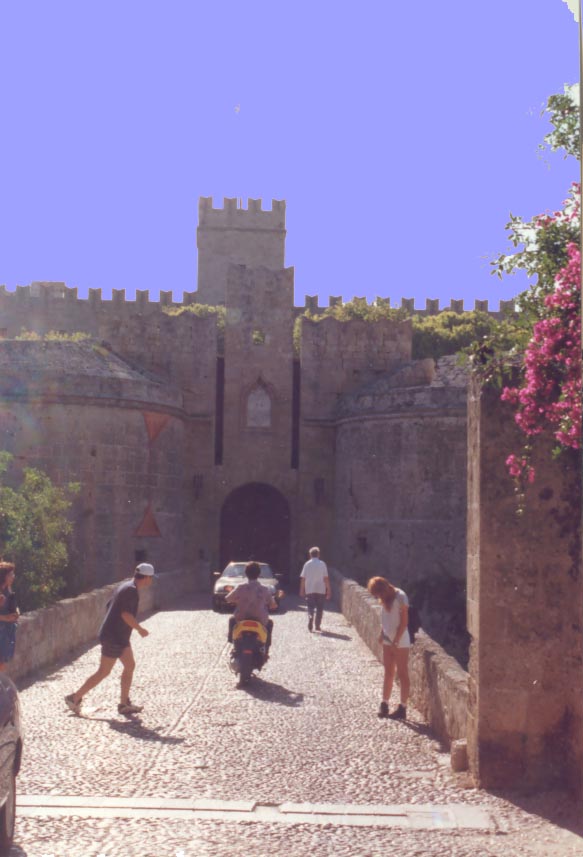
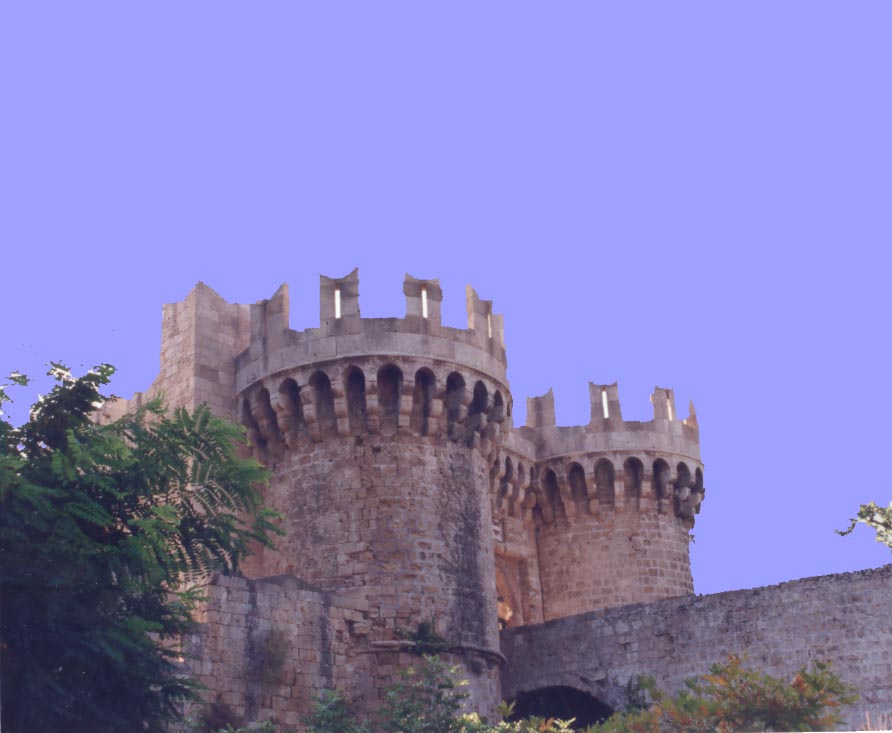
Near the important southern harbor is the old walled city, which was built mainly in the early 14th century by the Knights of Saint John of Jerusalem (see Malta).

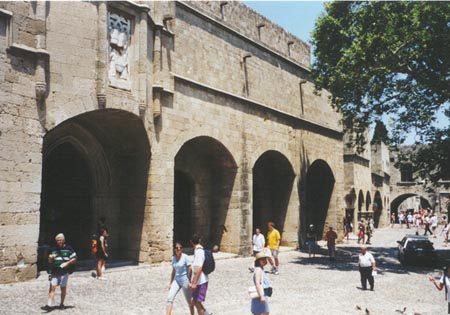

�
�
�
�
�
�
�
�
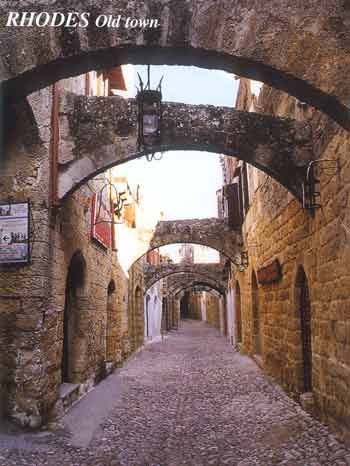
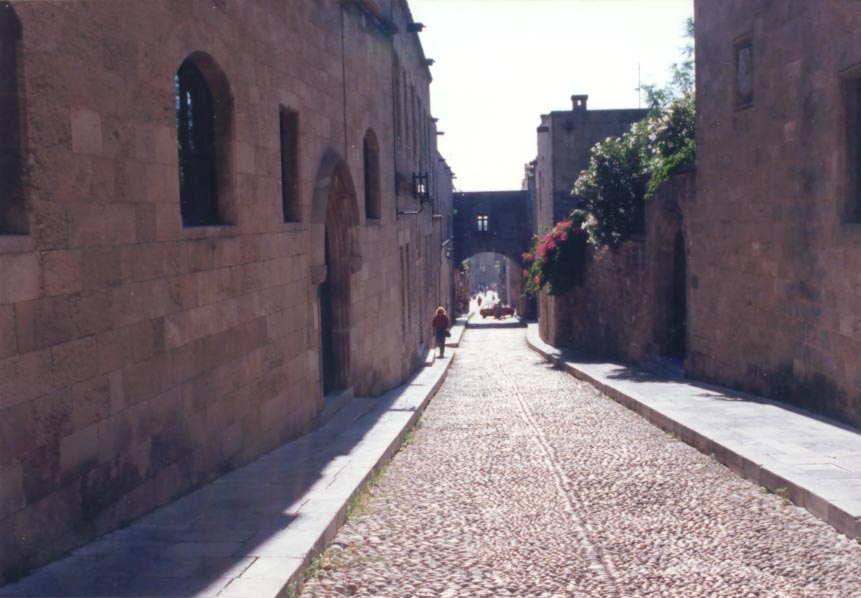
�
�
�
�
�
�
�
�
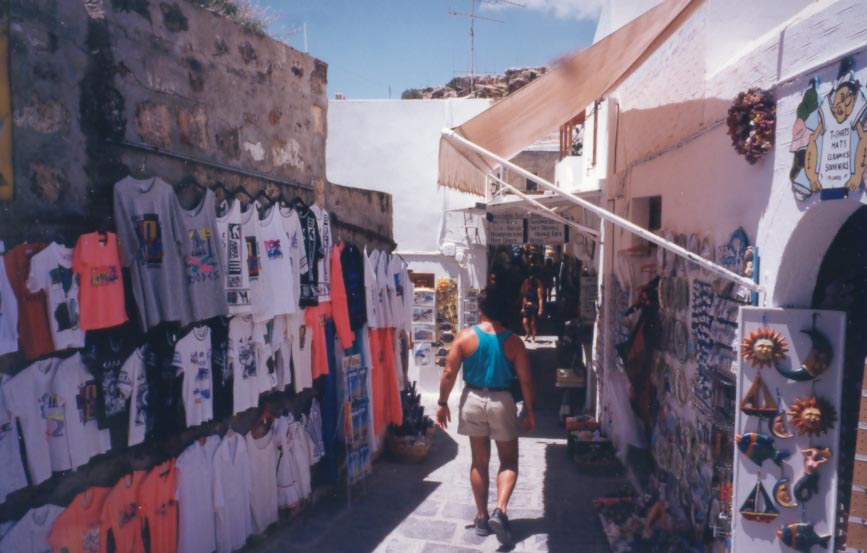
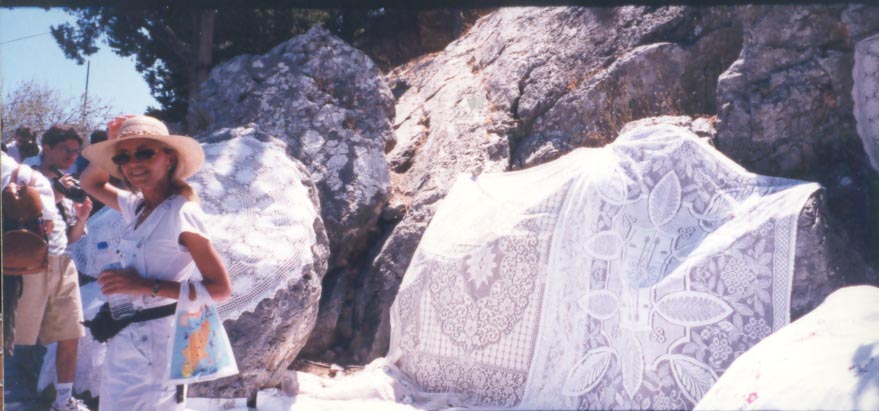
�
�
�
�
Narrow streets and beautiful lace work.
�

�
�
�
�
�
�

The walk (actually more like a climb) can be accomplished by walking or riding a donkey.
�
LINDOS
Europe's Ancient Greek Outpost
Near the town of Lindos on the Greek island of Rhodes, the crumbling ruins
of old fortresses remind one of the European Crusades. In the 14th century,
Christian soldiers from Europe known as crusaders used the island as an
outpost in their military campaign against the Turks.
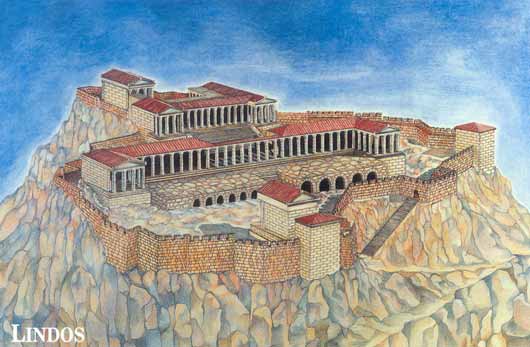
Artist's conception of Lindos in its original form.
and
The Lindos of Today
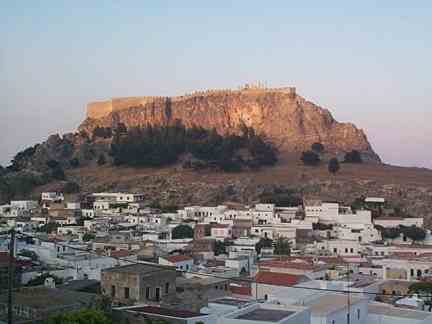
�
�
�
�
�
�
�
�
�
�
�
�
Lindos, distant 47km from the city of Rhodes, is one of the the island's major tourist attractions. The village has perfectly preserved its medieval character, with pebble-covered streets and whitewashed houses built on a slope just over the sea.�
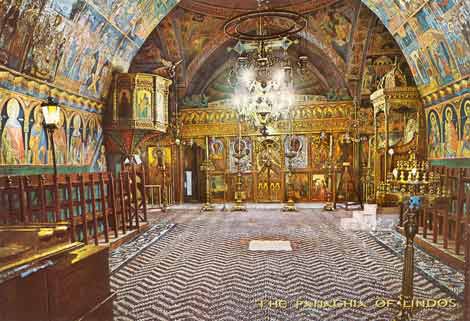
In the village you can visit the Byzantine church covered with eighteenth century frescoes. In the recent years, some 15th century houses have been declared traditional buildings to be preserved and can be visited.� Today, this peaceful traditional village has been chosen by many VIPs as the place to build a vacation house. The Byzantine church of the Panayia is also in the lower city. It was built In the 15th c. and decorated with wall-paint paintings in the 17th and 18th c.
�
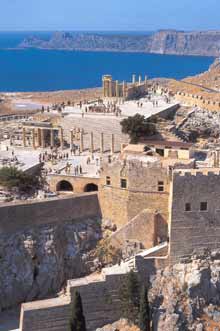
ACROPOLIS OF LINDOS�:� �Lindos is it rock.� This rock, which rises to 116 m. forms the finishing touch to the landscape of Lindos, standing dry and imposing in its bareness and surrounded on all sides by the sea. The acropolis was used as a fortress in antiquity, as well as In Byzantine times, in the period of the Knights of St. John, and in that of Ottoman rule.�
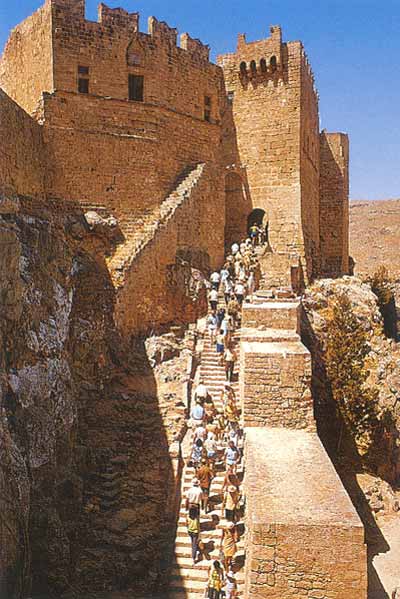
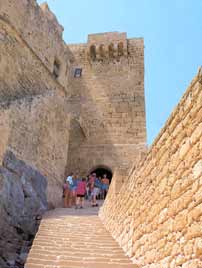
�
�
�
�
�
�
�
�
�
�
�
�

�
�
�
�
�
�
�
�
�
�
The ascent to the acropolis is still by the same steep road as in antiquity. After the first outer entrance to the medieval fortress, and before beginning to climb the large stairway that leads up to the Administrative Building of the Knights, there are two important monuments on the left : a semicircular Hellenistic exedra, and, next to it, a depiction of the prow of an ancient ship carved in relief in the rock, which formed the base of a statue of Agesandros son of Milkion, the work of the sculptor Pythokritos in the early 2nd c. BC The fortification of Lindos by the Knights goes back to the 14th-15th c AD.�
�
�
�
�
�
�
�
�
�
�
�
�
�
�
�
�
�
�
�
�
�
�
�
Passing through the ground - floor of the Knights Administrative Build Building, one emerges into a large square, which occupies the lowest level of the acropolis and was full of votive offerings in ancient times. A row of vaulted structures, built in the l st c. BC, stood on either side of a stairway leading up to the level of the large Hellenistic Stoa, built ca. 200 BC. (see below)
Through the main gate we discern the ruins of the Knight's Lodge and the Byzantine church of St. John. Outside the Doric Stoa the prow of a Lindian Hellenistic trireme has been carved in a rock (4.5 m x 5 m). We cross the Doric Stoa (5th century BC) with its 42 columns (20 have been restored) and climb the majestic staircase to higher terrace with Propylaean ruins (5th century BC).

�
�
�
�
�
P
�The large stairway behind the Stoa leads up to the highest level where are to be found the Propylaia and the temple of Athena (below), which formed the main sacred precinct.

From this point we reach the Sanctuary of
Lindia Athena, with
its elegant bi-prostyle temple on the edge of the cliff (4th century).
According to legend, the foundation of the sanctuary of Athena Lindia
goes back to the Mycenaean period, and Mycenaean finds have been yielded
by cemeteries in the broader area of Lindos. The Archaic period (7th-6th
c BC) was a golden age for Lindos, which played a leading role in the
Greek colonization movement, its most important foundation being Gela in
Sicily. The 6th c BC was dominated by the figure of a moderate tyrant,
Kleoboulos who ruled Lindos for many years, and was Included amongst the
�seven sages� of the ancient world.�During his rule,
the Archaic temple of Athena was built on the site of an earlier structure,
and the acropolis received its first monumental form.

�
�
�
�
�
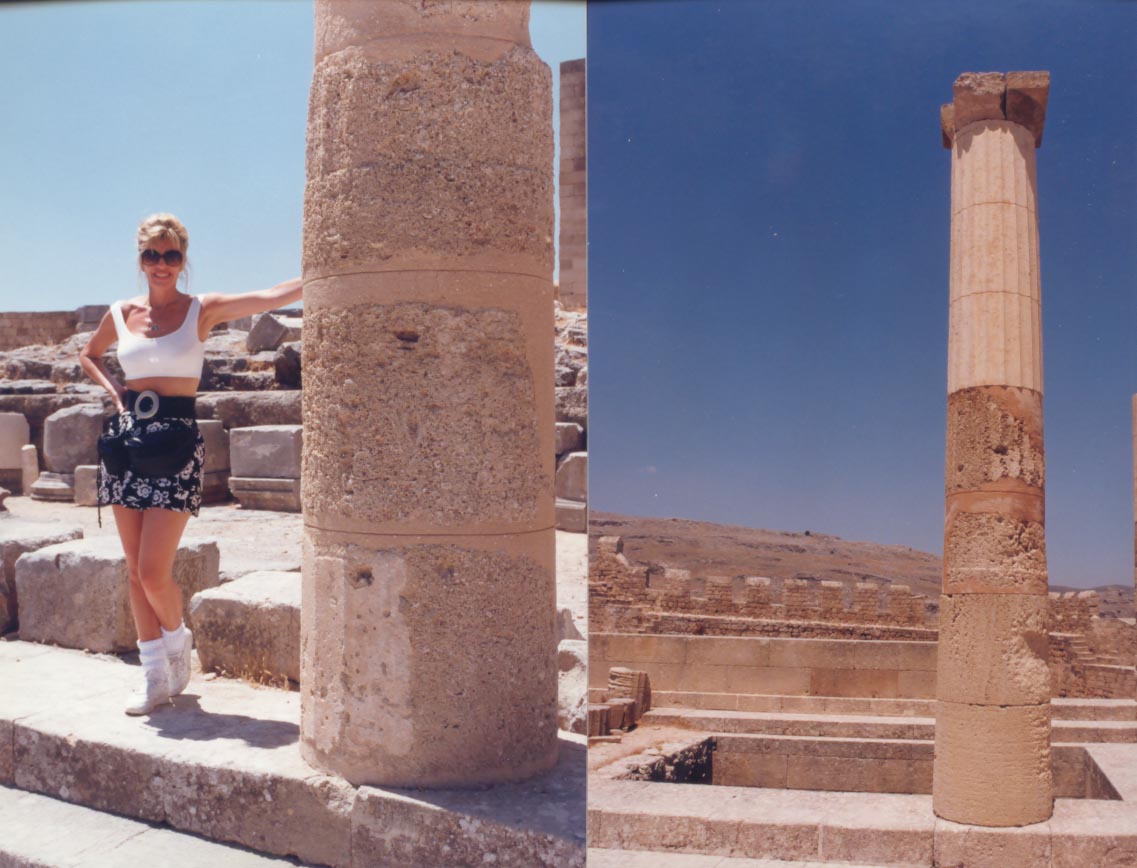
�
�
�
�
�
�
�
�
�
�
�
�
�

�
�
�
�
�
�
�
�
�
�
�

����
�
�
�
�
�
From the highest point of the acropolis can be seen the lower city, in which the most important monuments still visible are the theatre, the Tetrastoon and the Archokrateion at Kambana, a monumental tomb of an important Lindian family, Lindos Harbor and the Harbor of St. Paul ( Agios Pavlos) with its narrowed entrance.
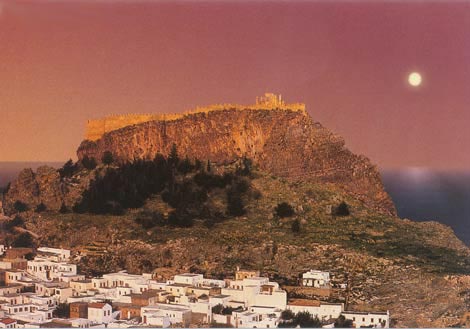
�
�
�
�
�
�
�
�
�
�
�
�
...........next stop is Asia Minor and Ephesus.
�
COME BACK SOON